How UK potato harvest has fared in a challenging 2025 season
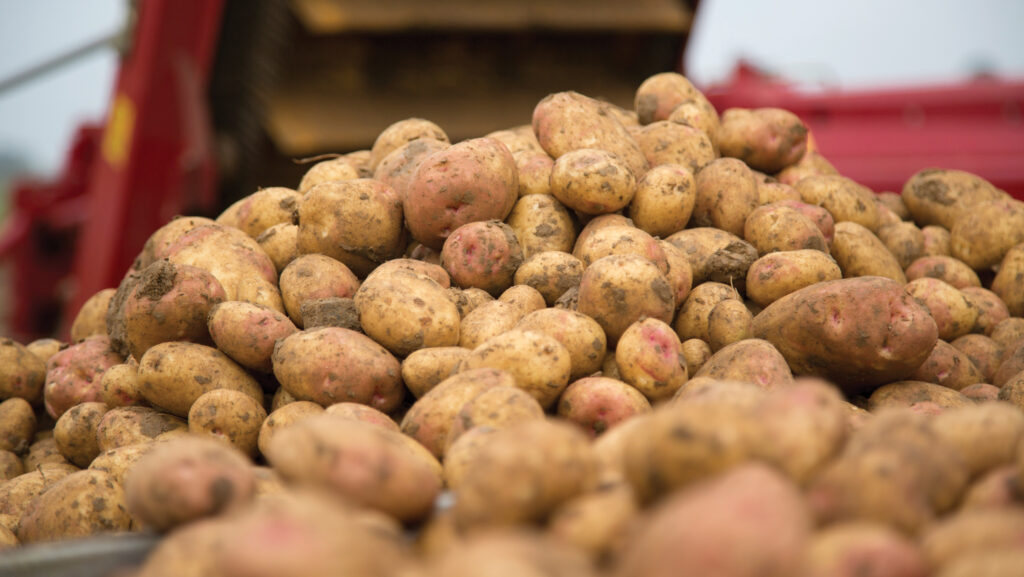 © GNP
© GNP One of the driest potato growing seasons in living memory has proved challenging for growers across the UK.
We spoke to four farmers to find out how their crops performed.
See also: Why vegetables are making a return to Kent arable farm
Fife
David Bell, Upper Magus Farm
Scottish grower David Bell has seen significantly higher yields this year across his 60ha of potatoes, which are grown within a wide arable rotation.
The main varieties on the farm are Gemson, Maris Piper, Cultra and Elland, grown for both salad and ware markets.
“Average yields have been about 60t/ha. That’s an increase of 5t/ha on last year and ahead of our five-year average,” says David.
The dry weather did put pressure on the Maris Pipers, which required constant irrigation. However, overall quality initially looks good, although no results have been returned yet.
Soil moisture probes have proved valuable again in helping to maintain consistent soil conditions, although limited water supplies meant irrigation was prioritised for the Piper blocks.
While yields and quality are encouraging, the market has been far more challenging.
“Free-buy trade has been very flat and salads have been a nightmare,” says David.
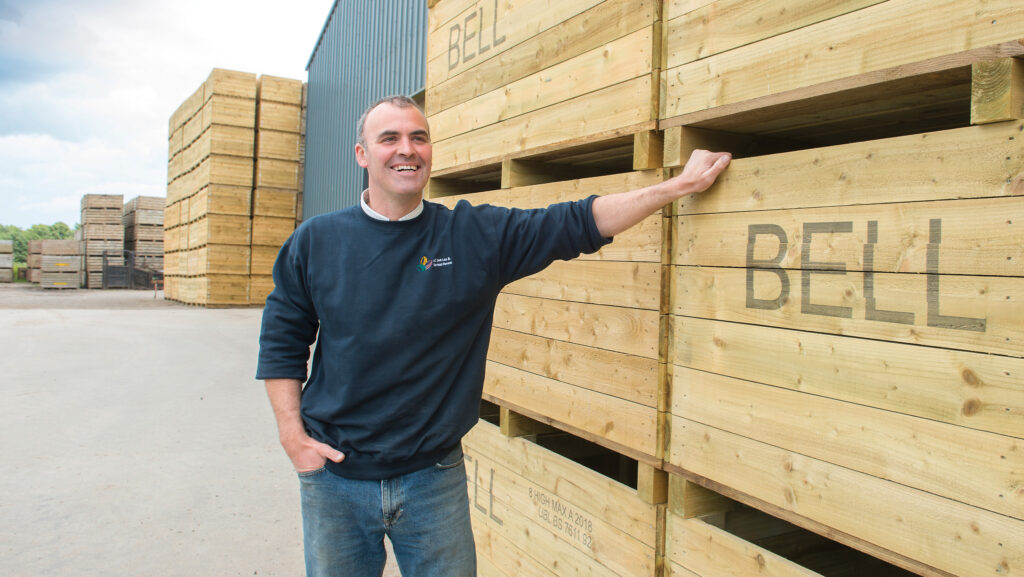
David Bell © David Bell
He explains that a new supermarket buyer has been sourcing salads from the south, disrupting existing contracts and supply chains.
“It’s completely knackered my cashflow and storage plans. I’ve had to hire extra boxes and storage, and when the crop eventually sells, it’ll be at a lower price – a quadruple hit.”
Rising costs have added further pressure, with extra storage hire, servicing and machinery parts all pushing up the cost of production.
Pest and disease levels, however, have been low thanks to more favourable growing conditions, allowing spray intervals to be stretched slightly.
Storage has been tight this season, with the slower movement forcing him to use cattle courts and straw sheds for extra space.
Looking ahead, David plans a slight reduction in potato area to maintain a six-year rotation and push towards one-in-seven for stronger integrated pest management (IPM).
“We’ll see what new ideas come out of the winter meetings,” he adds, “but for now, it’s about getting this season’s crop sold and learning from the challenges.”
North Norfolk
Tim Papworth, Lodge Farm
North Norfolk potato grower Tim Papworth, of LW Papworth Ltd, has been pleased with his results from a strong harvest.
Salads, being his main potato crop, have reached yields of 37t/ha, more than 1t/ha above their five-year average.
Tim grows numerous chipping and salad varieties across 90ha of ground, including Premier and Maris Peer.
“The sun has really helped this season,” says Tim.
“We irrigate all our crops and had plenty of bright weather, which has given us very good quality across the board. I’m very pleased with how the potatoes have come out this year for us.”
The dry conditions meant fewer disease and pest issues, allowing him to reduce chemical inputs.
Crop establishment for Tim’s crop follows a detailed routine: deep cultivation to de-stoning with a narrow web, and then planting three rows per bed to ensure even growth and good soil structure.
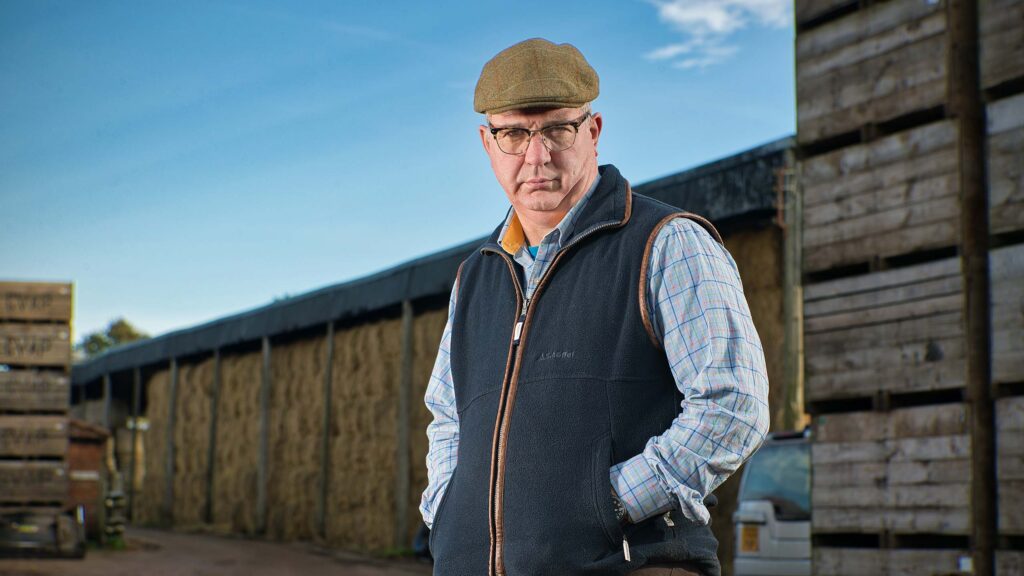
Tim Papworth © Richard Stanton
While quality and yield have been strong, the open market has been difficult this year, but that hasn’t proved an issue for LW Papworth.
“Thankfully, all our contracts are filled, and we don’t have a single potato left on the farm,” says Tim “Everything’s been shipped straight after grading, and all our salads have found a home.”
Costs of production have continued to rise, particularly labour, fertiliser and machinery, putting pressure on margins despite the strong yields.
Looking ahead, Tim plans to increase the potato area next year, confident in his contracts and forward planning.
“We’re making sure everything’s lined up early,” he says. “The key is to stay ahead, know where the crop’s going, and keep improving year on year.”
West Norfolk
Mark Means, The Laurels
The dry conditions and water shortages have impacted yields for west Norfolk potato grower Mark Means.
Farming 100ha of potatoes across a moisture-retentive alluvial silt soil, he is already concerned about where the water will come from for next season.
Mark grows an array of varieties including Maris Piper, Nectar and Melody.
“Everything went smoothly in the spring. Seed-beds were good, and the crops established well, but the season soon turned challenging once water became limited,” he says.
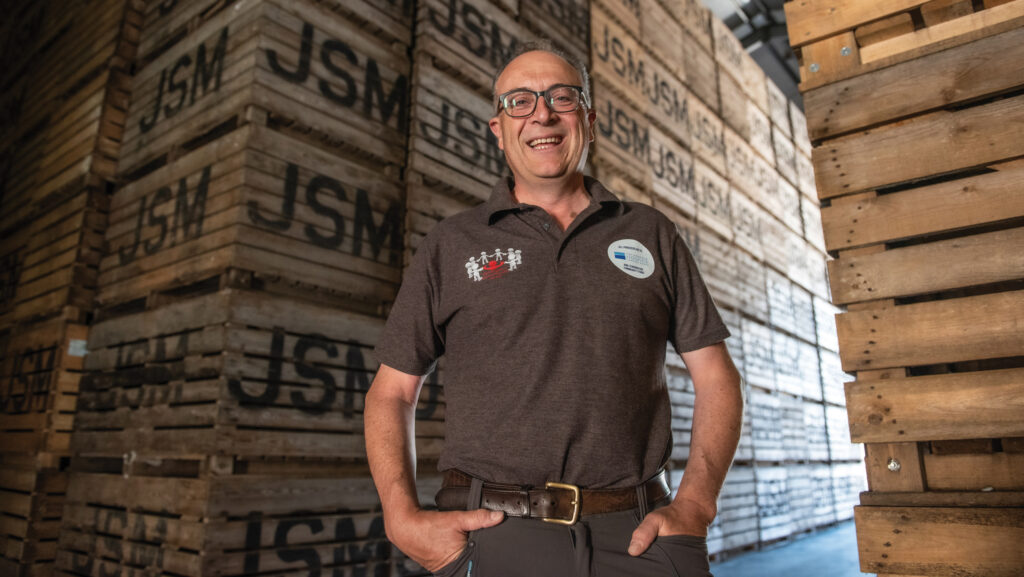
Mark Means © Phil Weedon
Both of the farm’s reservoirs ran dry before harvest, and while irrigation helped protect lifting conditions, some irrigated crops missed their final watering, leaving them slightly dehydrated and vulnerable to bruising.
Unirrigated fields also suffered, showing lower-than-average yields and quality.
“We’re hoping to reach around 50t/ha, which is about 5-10% down on last year. Our silty soils usually hold moisture well, but even they struggled towards the end,” he says.
Quality has been reasonable, with some odd internal issues and bruising in certain varieties. However, he has been pleased with the overall quality, given the conditions this year.
Wireworm is still a menace to potato production for Mark, and he is striving to reduce the risks benignly with agronomic operations.
Warm lifting conditions also made it difficult to cool stores quickly.
“We carry out a quality check every 20 to 25 boxes, which meant we tested over 200 samples this year. It’s vital to know exactly what we’ve got to meet customer standards.”
About 75% of the crop is grown on contract, with the focus firmly on fulfilling those commitments before deciding a marketing strategy with any remaining stock.
Costs have risen sharply, driven by higher labour, national insurance and machinery prices, along with growing financial pressure from increased borrowing and growing risks.
Looking ahead, Mark plans to refine variety choice, match crops more closely to customers and hopes for much-needed winter rain to refill reservoirs.
Yorkshire
Andrew Wilson, Brickyard Farm
York grower and Farmer Focus writer Andrew Wilson has seen a decline in his average yields this year across his 68ha crop of potatoes, with varieties including Royal, Innovator, Olympus, Alanis and Sagitta.
“This year’s average yield is around 45.2t/ha, roughly 6% down on our five-year average,” says Andrew.
The hot summer brought more challenges than the lack of rain, with several days in the high 20s and low 30s causing crops to shut down.
“A cooler September really helped late bulking and had we not planted into moisture after last winter’s wet weather, I think we’d be in a much worse position,” he explains.
While some chain tuberisation and secondary growth appeared in Royal, overall quality has been acceptable.
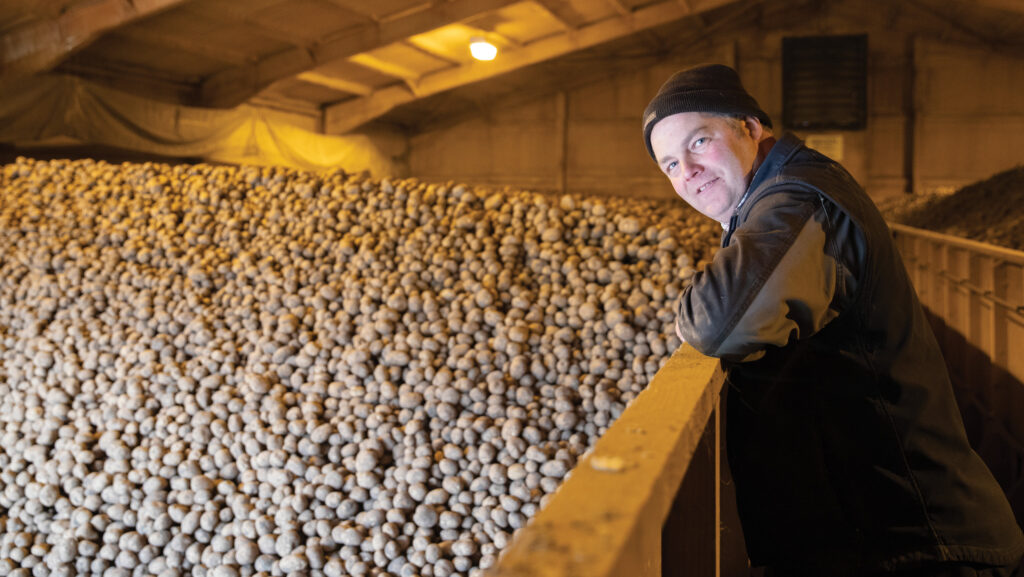
Andrew Wilson © Angela Waites Photography
Most of Andrew’s potatoes are grown on contract, but with steady markets he thinks it could delay movement of his crop.
His Sagitta crop is for the open market this year, which is oversupplied and will face tougher trading.
“The market is struggling, Europe’s big, cheap crops aren’t helping prices or movement,” he says.
Cost pressures remain high, particularly for irrigation. “Watering is expensive, time-consuming and not as effective as I’d like,” he says.
“That said, improving soil condition through cover crops and manure has proved its worth for moisture retention, enhancing structure and reducing cultivations.
“We establish crops using minimal cultivation, pulling a tined cultivator through topped cover crops and muck before shallow ploughing or using a Shakaerator if suitable.
Pest and disease pressure has been low, with effective biostimulants and careful blight management, allowing for small savings in crop protection.
Looking ahead, Andrew remains committed to potato production despite the risks.
“We’re quite invested in the crop, so we’ll stay focused on doing things better and make improvements as opportunity arises. Processing will remain our main market.”

